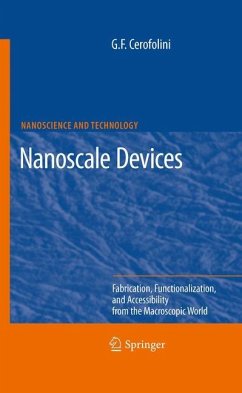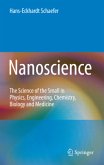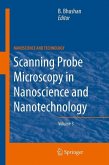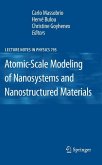The evolution of the microelectronics is controlled by the idea of scaling. However, the scaling of the device size below 10 nm is expected to be impossible because of physical, technological and economic reasons. Fundamental considerations (based on Heisenberg's principle, Schrödinger equation, decoherence of quantum states, and Landauer limit) suggest that a length scale of a few nanometers is possible. On this length scale, reconfigurable molecules (via redox or internal excitation processes) seem to be suitable for that. Moreover, crossbar with cross-point density in the range 1010--1011 cm-² can already be prepared with existing methods, and such methods permit the link of nanoscopic cross-points to lithographically accessible contacts. The structures for molecular electronics deal with molecules. Although this subject is highly interdisciplinary (covering quantum and statistical mechanics, supramolecular chemistry, chemistry of surfaces, and silicon technology and devices), the book is intended to be self-contained providing in appendices the necessary side knowledge.
The second half of the twentieth century and the beginning of the twenty ?rst have been characterized by the most impressive industrial revolution ever seen. In - proximately 40years, the complexity of integrated circuits (ICs) has increased by a 9 factor of 10 , with a corresponding reduction of the cost per bit by eight orders of magnitude. Not only has this evolution allowed dramatic progress in allscienti?c ?elds (large computers, space probes, etc.), but also has fueled the economic development with the raise of new markets (personal computers, cellular phones, etc.) and even social revolutions (world wide web, global village, etc.). In last years, however, the situation has signi?cantly changed: the continuous scaling down of device size has eventually brought the IC major technique, p- tolithography, to its limits. Overcoming its original limits has been proved to be possible, but the price to pay for that has changed the playing rules - while at the beginning of the IC history the evolution was driven by technology, now it is driven by economy, the cost of a medium size production plant being in the range of a few billion dollars.
The second half of the twentieth century and the beginning of the twenty ?rst have been characterized by the most impressive industrial revolution ever seen. In - proximately 40years, the complexity of integrated circuits (ICs) has increased by a 9 factor of 10 , with a corresponding reduction of the cost per bit by eight orders of magnitude. Not only has this evolution allowed dramatic progress in allscienti?c ?elds (large computers, space probes, etc.), but also has fueled the economic development with the raise of new markets (personal computers, cellular phones, etc.) and even social revolutions (world wide web, global village, etc.). In last years, however, the situation has signi?cantly changed: the continuous scaling down of device size has eventually brought the IC major technique, p- tolithography, to its limits. Overcoming its original limits has been proved to be possible, but the price to pay for that has changed the playing rules - while at the beginning of the IC history the evolution was driven by technology, now it is driven by economy, the cost of a medium size production plant being in the range of a few billion dollars.








